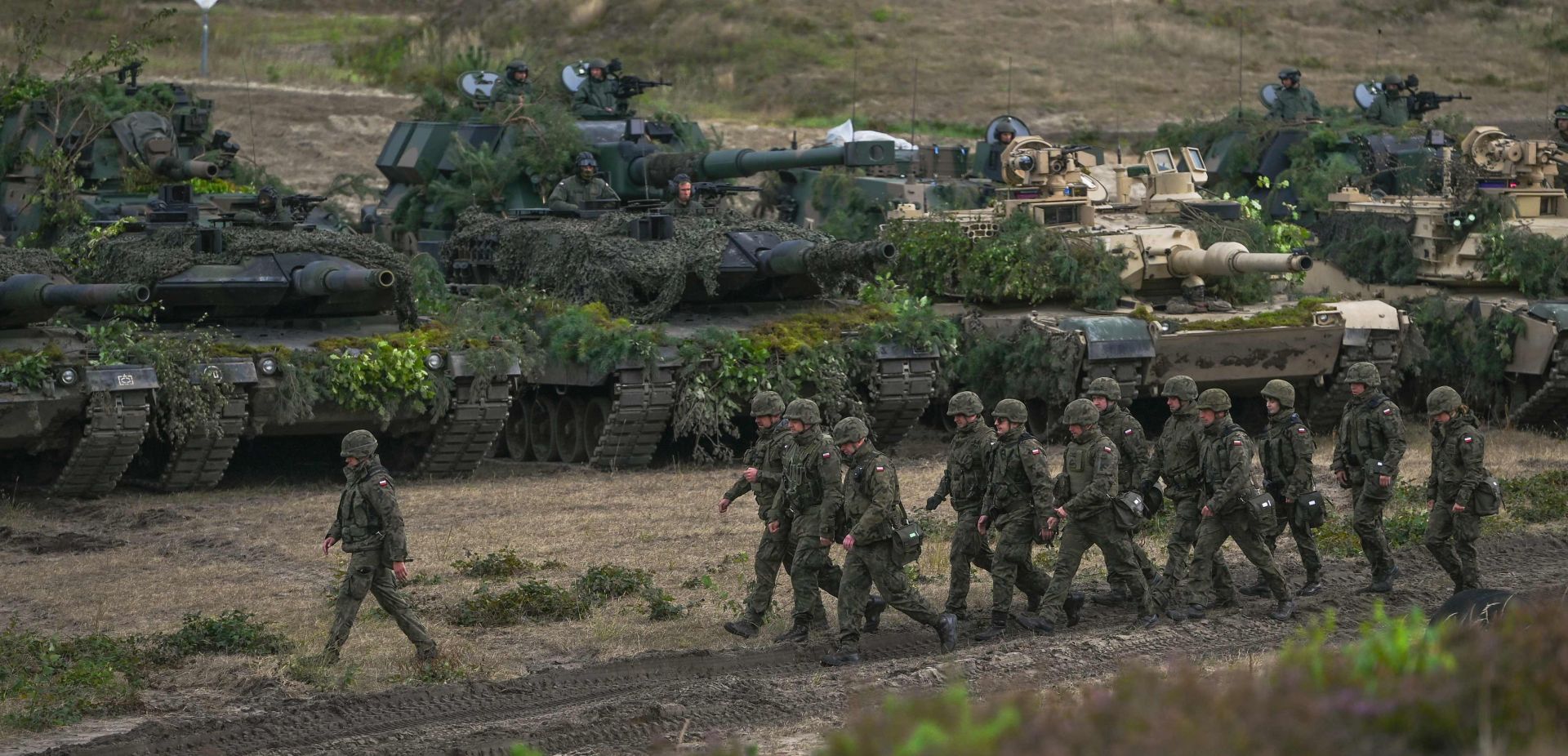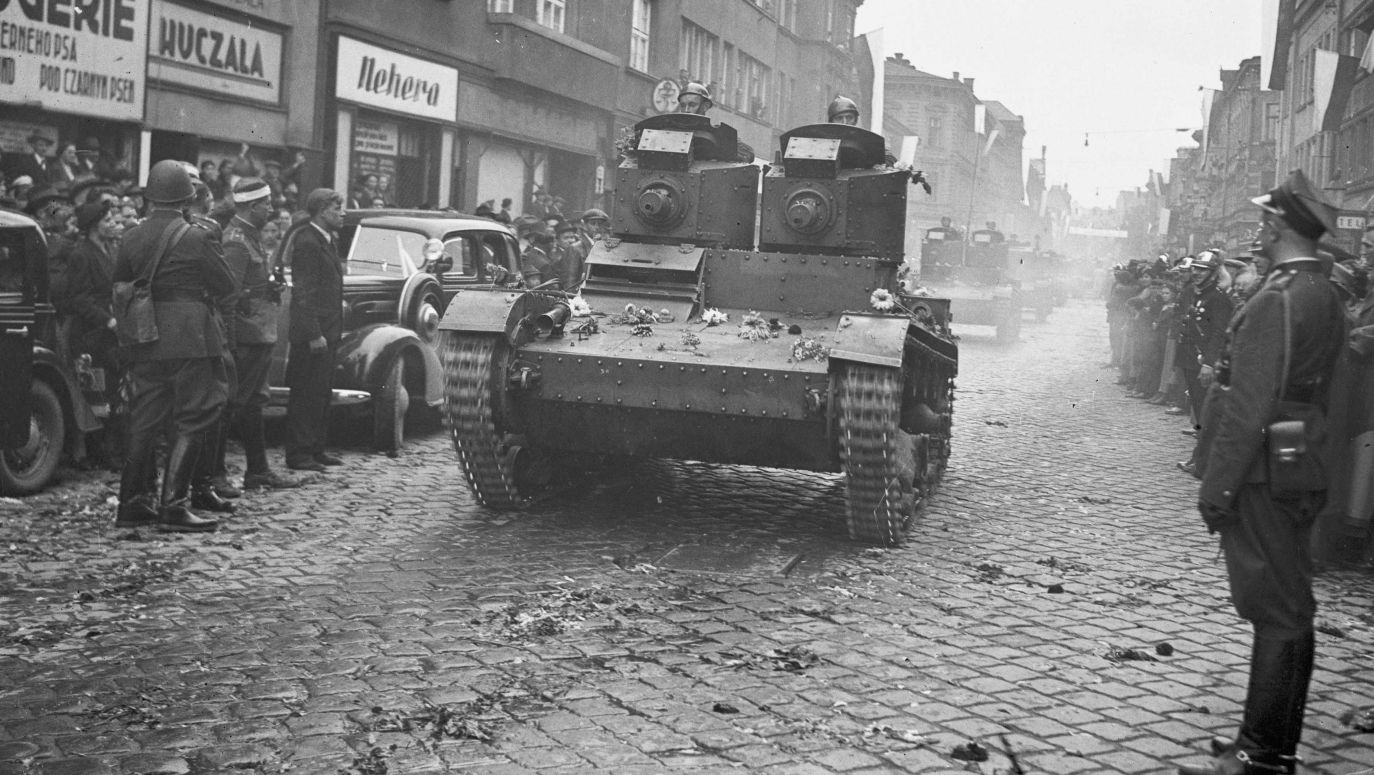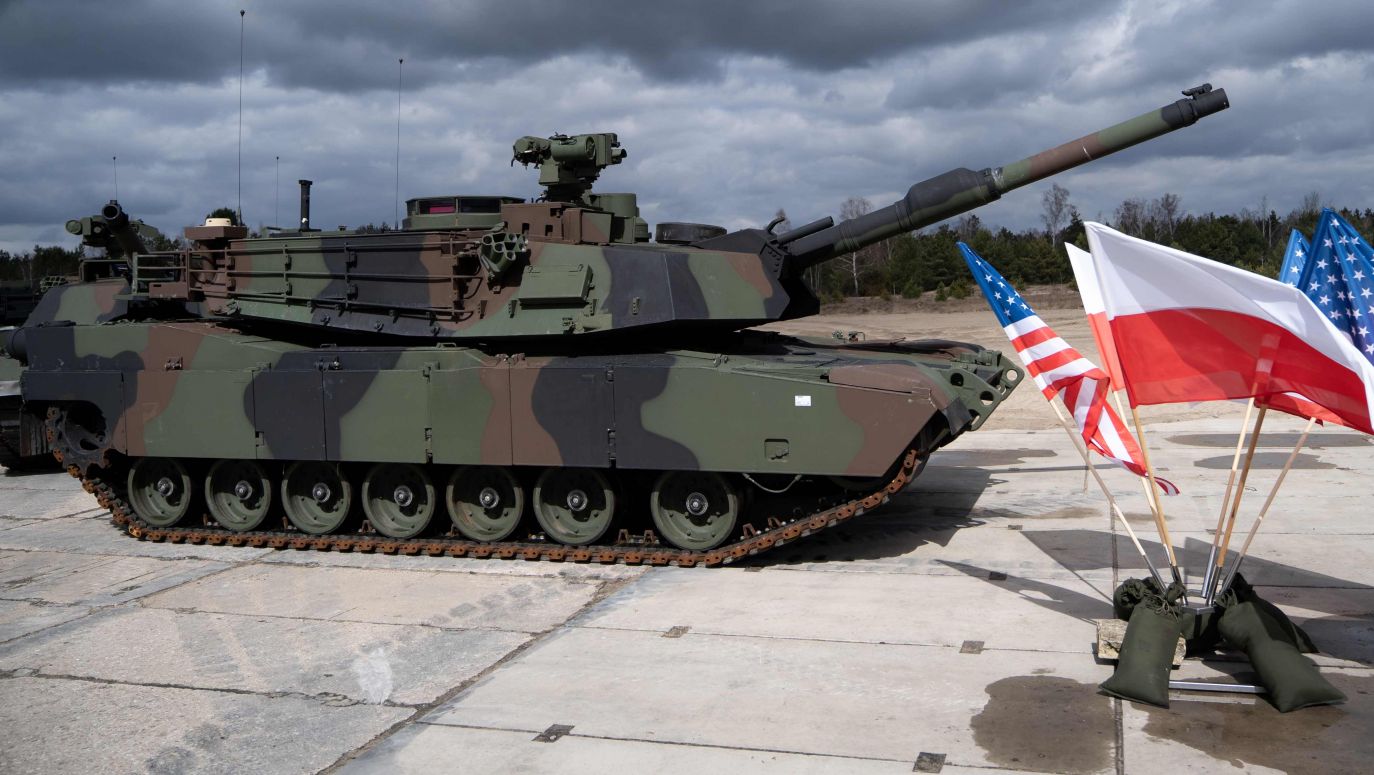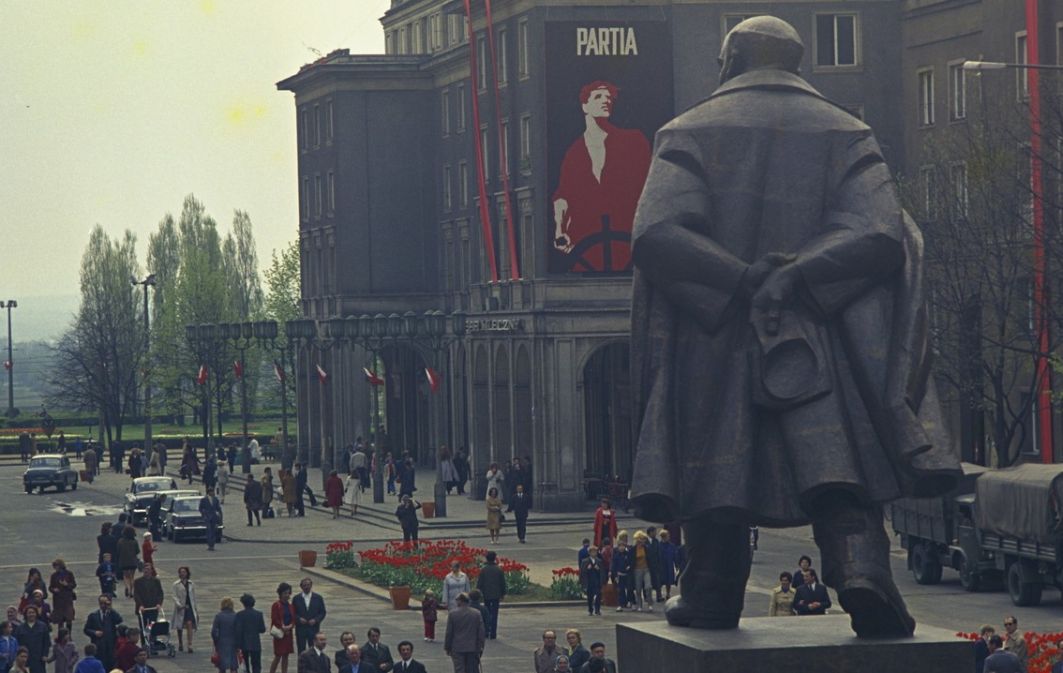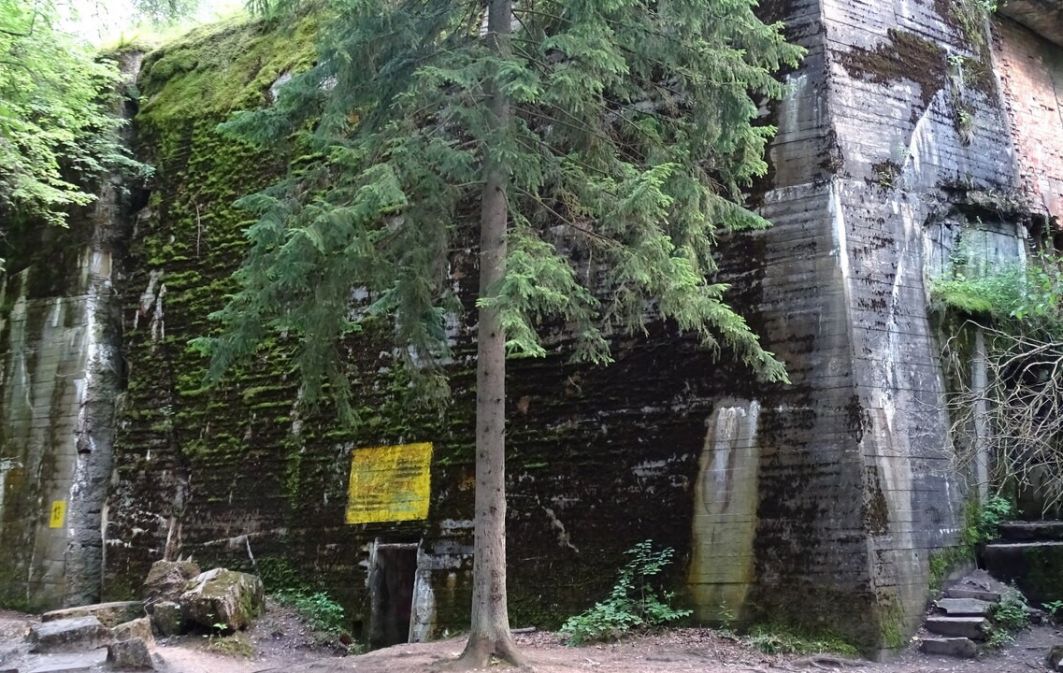A weak Russia will be a threat to NATO
01.02.2023
Tanks are easy targets because of their size. It's just that a tank is also a deadly machine that can accomplish important objectives at decisive moments in battle, argues Robert Forczyk, an American former military officer and author of books on military history.
TVP WEEKLY: I was somewhat surprised to learn that the author of many interesting books on military history, the man I thought was a Pole because of his last name, is a former American tank driver and intelligence officer.
Robert Forczyk: My family name is indeed Polish and my grandparents emigrated to the U.S. before World War I. I'm am Polish-Amercan. Unfortunately, my knowledge of Polish is rather limited to "dziekuje" and "dzien dobry" But I've always been interested in Polish history. I think that from this point Poland is in the best situation now, as never in the past centuries.
I'm glad that you aren't indifferent to my country.
Polish heritage is of course important to me, and my hero was Pope John Paul II, who supported the reconstruction of Polish independence and the restoration of freedom. You know that in countries like the United States, people take this for granted. In Poland, people have always fought for it in the past centuries. Therefore, we must understand that people are needed who want to become soldiers, policemen, doctors, and firemen, and people who want to defend this freedom.
Are you saying that as a former military officer…
I was commissioned as a tank officer in 1983. I served overseas in Korea and in the U.S., and I was also deployed in Europe. Later, I became an intelligence officer. After my military career, I became a consultant and worked for the U.S. Department of Defense for many years, dealing mostly with the Russians and Chinese. I was so busy with these jobs that I couldn't write, so I started writing in 2005. So I've been a history writer for 17 years. Now that I'm getting older, I've more time to write. And the military tradition has passed on to my children.
Is it military DNA?
The U.S. Army is our family business (laugh). All of my three children are in the military. Two sons and a daughter, who is a US Marine. My sons are in the U.S. Army, the oldest one was deployed to Europe when the Russian invasion of Ukraine started, and my daughter was in Japan.
I will come back to the present topics later, but let us start at the beginning. Since you are an acclaimed author of books about WWII let's start with the iconic question. Did Poland have the chance to defend in 1939?
They had the money, the resources, and the technical material to mount a defense against an enemy, they might have been able to hold out long enough for Britain and France to help out, but unfortunately, they were attacked by both - by Germany and, of course, by Russia, and the Polish strategic plan could not succeed under those conditions, they could not fight a two-front war. As soon as Germany and the Soviet Union, Hitler and Stalin, signed the secret Ribbentrop-Molotov Pact, it was hopeless to defeat them.
Since you're an expert on tank warfare, let me ask you another question: Were the Polish tanks much worse than the German ones?
We were taught many years ago that Poland had no tanks at all. And... that wasn't true, because there were more than 400, but Germany had about 1500, Russia much more than that. Poland had a 7TP that was as good as any tank the Germans or the Russians had. The main problem was another: the lack of a modern fighter. Poland hoped to buy British or French aircraft to make up for this shortage, but this didn't happen in time. Poland, however, had some very good weapons, a number of new weapons were developed, and new artillery pieces that could have made a difference if Poland had had perhaps two more years to prepare, but it couldn't defeat Germany and Russia together.
In your other book, you dispelled the widely held myth that even France could defend itself against Germany in 1940.
In the “Fall Rot”, my point was to debunk some of the stereotypes. Defeating France wasn't as easy as everyone thought. France only had to worry about a one-front war, they only had to worry about Germany, not Russia. The problem is that their strategy was wrong in several areas. They hoped to hold the Germans in the Maginot Line, but the enemy moved through the Ardennes. This was a serious strategic mistake. Second, they invested too much energy in projects such as building new battleships and new bases in Algeria, but these did nothing to stop the German attacks. In this way, they wasted much of their resources.
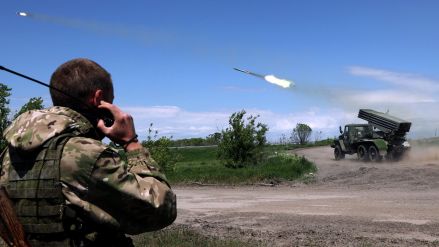
The war is the same as a century ago.
see more
History proves that alliance matters when world conflict begins. For 84 years we have blamed England for September '39...
England was largely responsible for what happened to Poland and then to France. First England allowed Czechoslovakia to be sold out in 1938, then it guaranteed Poland's borders in 1939, and then it did nothing to help. No weapons, no financial aid, just the guarantee, a worthless piece of paper. And then when the French were invaded, Britain did very little to help them either against the Blitzkrieg.
The word Blitzkrieg is good to ask about famous German tanks. Legend or reality?
There are a lot of people who are fascinated by the German Panther and Tiger tanks, because of their big guns and thick armor plate. I would like to highlight Joseph Goebel's propaganda creation. He was the one who created the idea of giving the new German tanks these very interesting names and legends around them, which persist even today. The mythology around them was that they were bigger and better than anybody else's, and a lot of people, especially hobbyists and gamers, still think that they were actually that special. The fact is that Germany achieved most of its military victories in 1939-42 with medium tanks like the Panzer III (PzKpfw III), which was obsolete by 1943. By the time the Panther and Tiger appeared, Germany had already lost the war. These heavy tanks were slow and used a great deal of fuel, which actually hindered German armored operations in 1943-45. Most Internet discussions about tanks focus on their main guns and firepower. However, very little discussion is made about mobility, reliability, and other factors. Having the biggest gun does not mean it is the best tank. The German Tiger tank could barely move 50 kilometers without breaking down and it could not cross many small bridges. So, in my opinion, the best all-around tanks in World War 2 were: the Panzer IV (Germany), the M4 Sherman (USA/UK), and the T-34 (USSR).
Our generation grew up with a fascination for T-34 tanks. Not only thanks to Soviet propaganda, but also thanks to the propaganda series of the former regime TV about the crew of the T-34.
As a combat vehicle, the T-34 was revolutionary, probably the best tank in 1940-1941, featuring sloped armor that provided much better protection, a powerful and reliable diesel engine that gave it excellent mobility, and a 76.2-mm gun that gave it excellent firepower. Tests in the prewar period showed that the T-34 could travel 1,000 kilometers in winter without breaking down. When the Germans first encountered the T-34 in June 1941, they were shocked to find it superior to their tanks in almost all respects. Therefore, the Germans immediately recognized this and developed the Panther tank in response to the T-34. The real problem was that the Russian tank drivers were not well trained. The Russian army, dating back to World War I, did not train its soldiers the way Germany did, where tank drivers were better trained and knew how to get the most out of their equipment.
The history of armored warfare is the history of inventions. And one of the first milestones was created by a Polish engineer.
Yes, I did a lot of research on pre-war tank technology and was aware of Mr. Gunlach's invention. In WW2, his design was adopted by all major armies: a tank periscope, and it was interesting because it could rotate and be easily mounted inside. All armies adopted it in WW2, the Germans, the Russians, the Americans, the British, and of course Poland was the first country to use it in 7TP tanks. During my service, we still used this technology.
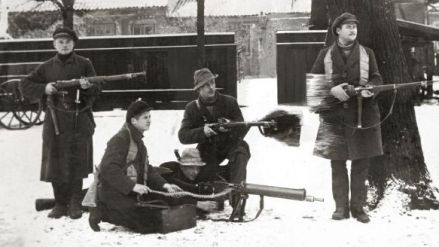
The French, Germans and Poles were involved in the territorial altercation.
see more
What are the other decisive factors?
Definitely communications and radios. The British were the first to start equipping tanks with radios in the 1930s, which made it possible to coordinate larger tank formations. When you have radios, suddenly you can operate in battalions and brigades as a team. So the radio is not only critical in tanks, but it makes a big difference in tank warfare. The second point was the development of high-horsepower diesel engines. These engines allowed for larger tanks with better guns and more armor. The USSR, Italy, Japan, and the United States all invested in diesel engines for tanks. Surprisingly, Germany did not, and it paid a high price for this mistake.
Nowadays a tank is an advanced, computerized, and better-protected vehicle.
The development of advanced ceramic armor in the 1970s greatly improved this protection. The British developed a new type of passive armor for tanks. It consists of different layers, such as steel, ceramic plates, or even plastic, which makes it much more difficult for a shell or missile to penetrate the armor.
The active approach is explosive-reactive armor, in which metal boxes containing small explosive charges are placed on the outside of the tank. If the tank is hit in one of these boxes, it explodes and theoretically destroys the enemy missile.
Thermal imaging sights, developed in the early 1980s, were an important invention that enabled tanks to engage targets at night and in poor visibility conditions.
So we have moved seamlessly to the present time? Is this war the end of the age of tanks, when drones are like tank hunters?
All weapons systems are vulnerable to attack, including drones. All weapons also have their limitations. Drones don't work very well in rainy weather, but tanks do. Many drones can be shot down with a rifle, but tanks require a lot of firepower to destroy. Anything on the modern battlefield can be killed, and tanks are great targets. However, the modern tank is also a very lethal weapon that can still achieve decisive results if used properly and with trained soldiers on the battlefield. Tanks still scare their opponents because no one wants to fight them on foot in the open field, even if you have a Javelin missile. One thing people forget is that it's very scary for soldiers on the ground when tanks come at them. In World War II, it was called "tank fear","panzer angst", when you're on the ground and you have a rifle and a 50-tonne vehicle is coming at you. Drones aren't scary, but tanks can be.
In the future, tanks can be expected to have better protection against missiles and to be camouflaged to some degree to make them difficult to detect. The most important feature of modern tanks is mobility, so the gas turbine engine is still the best option. However, some countries, such as Poland and Ukraine, should also consider cheaper 'assault guns', which are better suited for defensive tasks.
We are about to sign a contract to supply 250 M1 Abrams tanks for the Polish Army. How would you evaluate our tank arsenal?
I think Poland does not need the most expensive vehicles, but certainly you need tanks to protect your border. This weapon is a very good investment.
Poland receives the Leopard tanks from Germany and 300 M1 Abrams tanks from the U.S., both of which are better suited for offensive combat than any Russian machine. Polish strategy has always been to be able to launch a counterattack, and tanks are very useful for that. If Poland is concerned about its territory and needs to be able to retake it, tanks are the best way to do that. The main battle tank will be around for a long time and will be used frequently in future conflicts. Tanks are also very useful in deterring aggression. Therefore, it is important that Poland upgrade its own armored units with the latest M1A2 tanks. If Poland had had several hundred modern tanks in 1939, its neighbors would have thought twice about invading.
We are confronted with Russian aggression in Ukraine. Was it the biggest disaster in their military history?
Yes, it is like the Soviet invasion of Finland in 1939. The Russians managed to defeat Finland only because Finland received very little military aid from other countries. In 2022, Russia lost about 50% of its modern tanks and BMPs in Ukraine - it will take a decade to replace those losses. In February 2022, the Russian army was not prepared to conduct high-intensity operations against a well-equipped opponent. It hoped for a quick psychological victory through a show of force, as it did in Crimea in 2014, and deployed too many forces to hit too many targets at once, especially in terms of supplies. The first attack on a large urban area like Kyiv was a big mistake. The Russians had not rehearsed the conquest of large urban areas like Kharkiv. They quickly lost the initiative in Ukraine and suffered heavy losses, including more than 1,600 tanks (including 41 T-90s, 370 T-80s, and 917 T-72s) and 1,900 armored personnel carriers. The Russian deployment of tanks in Ukraine was stopped by very poor tactics and the Ukrainians' reception of modern anti-tank missiles.
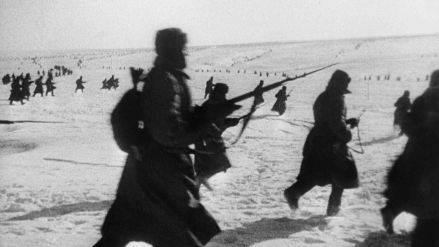
Every soldier felt the sights of the blocking units trained on him, even if they were not present.
see more
What are the other reasons for that failure?
For example, their tanks are good. The T-80 is good enough to do the job, but the Russians do not use them well. So, Ukraine was able to destroy them quite effectively. Another one is the T-72, which I used during training. It's crowded inside, but it’s good enough to do its job. And as I said before you can have the best tanks in the world but if the crews are not well trained and the commanders don’t know how to use them, you’re not gonna win. It’s like with sports, team sport, being the best, the fastest runner doesn’t mean you’re gonna win, you have to work, to play as a team. The Russians still don’t know how to do it. The main problem of the Russian army is not the equipment and weapons.
What are your predictions for the future of the war in Ukraine?
Russian aggression is nothing new, as you well know (laughter).
Russia invaded its neighbors and lost, even with Poland in 1920, with Japan, and Finland. But what's important here, and I think we see it here in the U.S. and in NATO, in the EU, is that we need to push for a ceasefire and a negotiated settlement. The longer this war goes on, the worse it is going to get. Russia has already lost the war, they are not going to conquer Ukraine, but they have destroyed a large part of the country, and the longer this war lasts, the more destroyed it will be. And Russia also needs a lot of time to recover its losses. For Poland, NATO, and the U.S., the longer the war goes on, the worse it is, because Putin is more desperate. Ukraine will have to accept that it will not get Crimea back, and the sooner it accepts that, the better. With Russia, we should push for a tough agreement. Can we trust Putin? No. But we still have to negotiate with him. It's in all of our interests. USA, Poland, and Russia.
In short, Russia has already lost the war in Ukraine, and NATO should think about how to secure long-term peace and stability in Eurasia, not just make sure Ukraine gets what it wants.
In the long term, Ukraine should not be included in NATO. The charter of NATO states that nations with ongoing territorial disputes should not be admitted to the organization, as this would mean that NATO could be drawn into the conflict.
What a Russian military defeat can mean for NATO?
Paradoxically, it is a threat to NATO. A weaker Russia could lead to internal chaos, as in 1991, which would be bad for everyone. A weaker Russia could also encourage China to commit aggression in Siberia and Islamic groups to spread into Central Asia. NATO needs a Russian military strong enough to defend its own territory, prevent unrest, and ensure that its nuclear weapons do not fall into the wrong hands in order to survive.
After all, I have a feeling that here in Central Europe we still need the support of the United States. Is this shock-resistant to US political turmoil?
Well, I want to be careful here (laughs). The U.S. made many mistakes that contributed to the outbreak of war in Ukraine. If U.S. forces had been sent to Eastern Europe before the Russian invasion, the Russians might not have invaded. But the U.S. waited, it didn't provide military support until the invasion began. The good news was that the Ukrainians were able to hold out until military assistance arrived. And I think the mistake that the U.S. is making now is that they want the war to continue because part of our leader's strategy is to remove Putin from power, to make him overthrown. They mistakenly think if he's badly beaten in Ukraine, he's gone, but I don't think that is going to happen, and even if it did happen if you look at the history of Russian leaders. If Putin is replaced, it will probably be by someone younger and worse, who is not a friend of the West. I think Putin will become very unpopular in Russia once the war in Ukraine is over. Peace will be harder for Putin than war; he'll have to pay a heavy price for all the Russian soldiers who lost their lives in this war. He'll not have an easy time ruling Russia after the war because of the anger over so many lives lost.
– intervew by Cezary Korycki
Robert Forczyk - former U.S. Army officer. Author of highly acclaimed books on military history: Case White: The Invasion of Poland, Case Red: The Collapse of France, We March Against England: Operation Sea Lion, 1940–41, Where the Iron Crosses Grow: The Crimea 1941-44.
